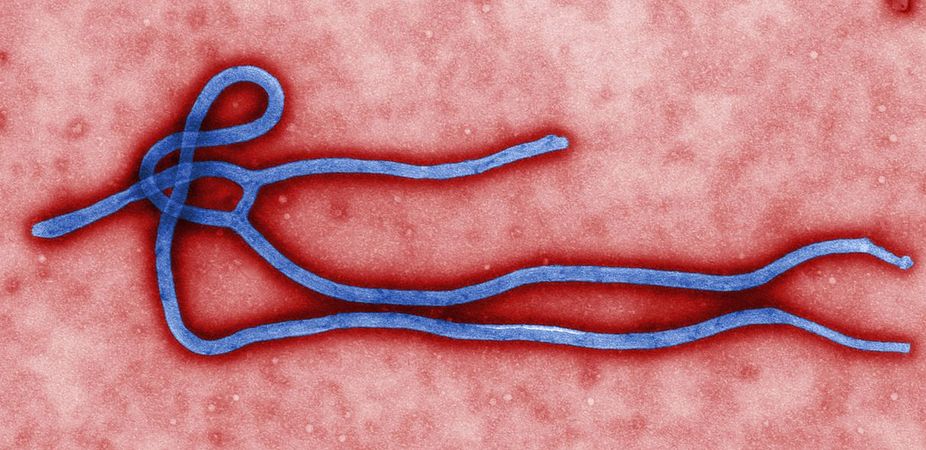Could Ebola Become Airborne?

The Ebola virus is currently causing a devastating and unprecedented outbreak in West Africa, but could the virus create a doomsday scenario by turning airborne?
Although one infectious-disease expert has voiced concern that the Ebola virus could gain the ability to spread through the air, others say this scenario is extremely unlikely. What's more, an "airborne Ebola" might actually be a less dangerous virus than the strain involved in the current outbreak, experts said.
Last week, Michael Osterholm, director of the Center for Infectious Disease Research and Policy at the University of Minnesota, published an op-ed in The New York Times in which he argued that the ability of Ebola to become airborne is a real risk that virologists don't like to talk about publicly.
Currently, Ebola can be spread only through contact with bodily fluids, but each new human infection with Ebola gives the virus a chance to mutate, Osterholm said. "If certain mutations occurred, it would mean that just breathing would put one at risk of contracting Ebola," Osterholm wrote. "Infections could spread quickly to every part of the globe." [5 Things You Should Know About Ebola]
Other experts disagreed. Although it's theoretically possible that Ebola could become airborne, "it's pretty unlikely," said Dr. Amesh Adalja, an infectious-disease physician at the University of Pittsburgh.
"Airborne transmission may be what we fear the most, but evolutionarily speaking, it may not be the best path for the virus to take," Adalja said.
The Ebola virus does mutate, or change its genetic material, fairly frequently, but this does not necessarily mean it can become airborne, Adalja said. The HIV virus has a high rate of mutation as well, but it has not acquired the ability to spread through the air, despite infecting magnitudes more people than the Ebola virus has, Adalja said. In fact, none of the 23 viruses that cause serious disease in humans have been known to mutate in a way that changed their mode of infection, according to Dr. Scott Gottlieb, former deputy commissioner at the Food and Drug Administration, who recently wrote about the topic in Forbes.
Sign up for the Live Science daily newsletter now
Get the world’s most fascinating discoveries delivered straight to your inbox.
Genetic mutations are random, and some Ebola mutations may not cause any noticeable changes at all, while others may render the virus nonfunctional, Adalja said. Only a small fraction of mutations will result in an advantage to the virus, he said.
"It's probably going to take a series of mutations that are very exact," that happen in the right order in multiple genes, for the virus to become airborne, Adalja said.
Derek Gatherer, a bioinformatics researcher at Lancaster University in the United Kingdom, agreed. The ability of Ebola to become airborne "requires a conjunction of coincidental, unlikely events," Gatherer said. "This is a 'worst possible case' scenario, but there's no reason for us to think it will happen." To be airborne, a virus needs to dry quickly in the air, which Ebola does not do currently, Gatherer said.
And even if Ebola were to become airborne, that doesn't mean it would be more dangerous than its current form, Adalja said. Viral mutations can come with trade-offs — the virus may gain the ability to spread through the air, but lose the ability to infect people, or to cause serious symptoms, Adalja said. [5 Viruses That Are Scarier Than Ebola]
"I wouldn't assume that if Ebola became airborne that it would be the exact same virus" that's spreading in Africa right now, Adalja said.
In addition, Gatherer said there's no evidence of any other filoviruses — viruses that belong to the same family as Ebola — spreading through the airborne route in people.
Osterholm did recall, however, a 2012 Canadian study in which pigs infected with the Ebola virus spread the disease to monkeys housed in cages in the same area, but did not have direct contact with the pigs. The monkeys showed signs of respiratory infection with the virus. This study, Osterholm wrote, "proved that Ebola Zaire, the same virus that is causing the West Africa outbreak, could be transmitted by the respiratory route from pigs to monkeys."
But contrary to Osterholm's statement, Gatherer said the study was "unable to conclusively prove that the transmission was airborne." The study researchers themselves wrote in their paper that, while the animal facility was being cleaned, droplets containing the Ebola virus could have been splashed into the monkey cages, and the monkeys may have become infected by touching the dried droplets.
Even if the Ebola virus did spread from pig to monkey through the air, "this is a rather contrived model if our primary concern is human-to-human [transmission], in which case the experiment should have been monkey-to-monkey," Gatherer said.
Still, Adalja said it's important to keep checking the Ebola virus in this outbreak, and future outbreaks, to see what mutations are occurring, and whether those mutations affect the spread of the virus.
Follow Rachael Rettner @RachaelRettner. Follow Live Science @livescience, Facebook & Google+. Original article on Live Science

Rachael is a Live Science contributor, and was a former channel editor and senior writer for Live Science between 2010 and 2022. She has a master's degree in journalism from New York University's Science, Health and Environmental Reporting Program. She also holds a B.S. in molecular biology and an M.S. in biology from the University of California, San Diego. Her work has appeared in Scienceline, The Washington Post and Scientific American.









